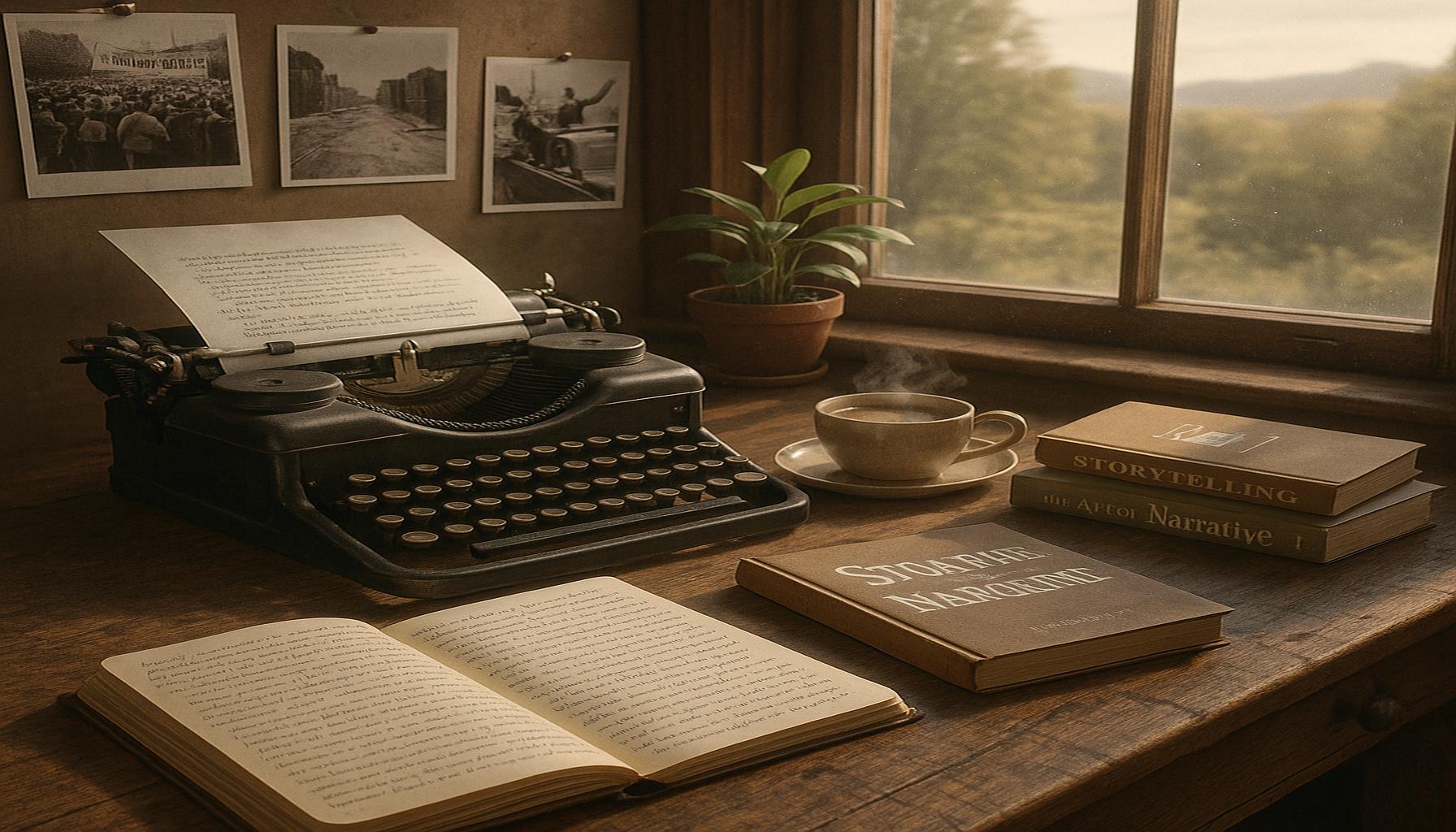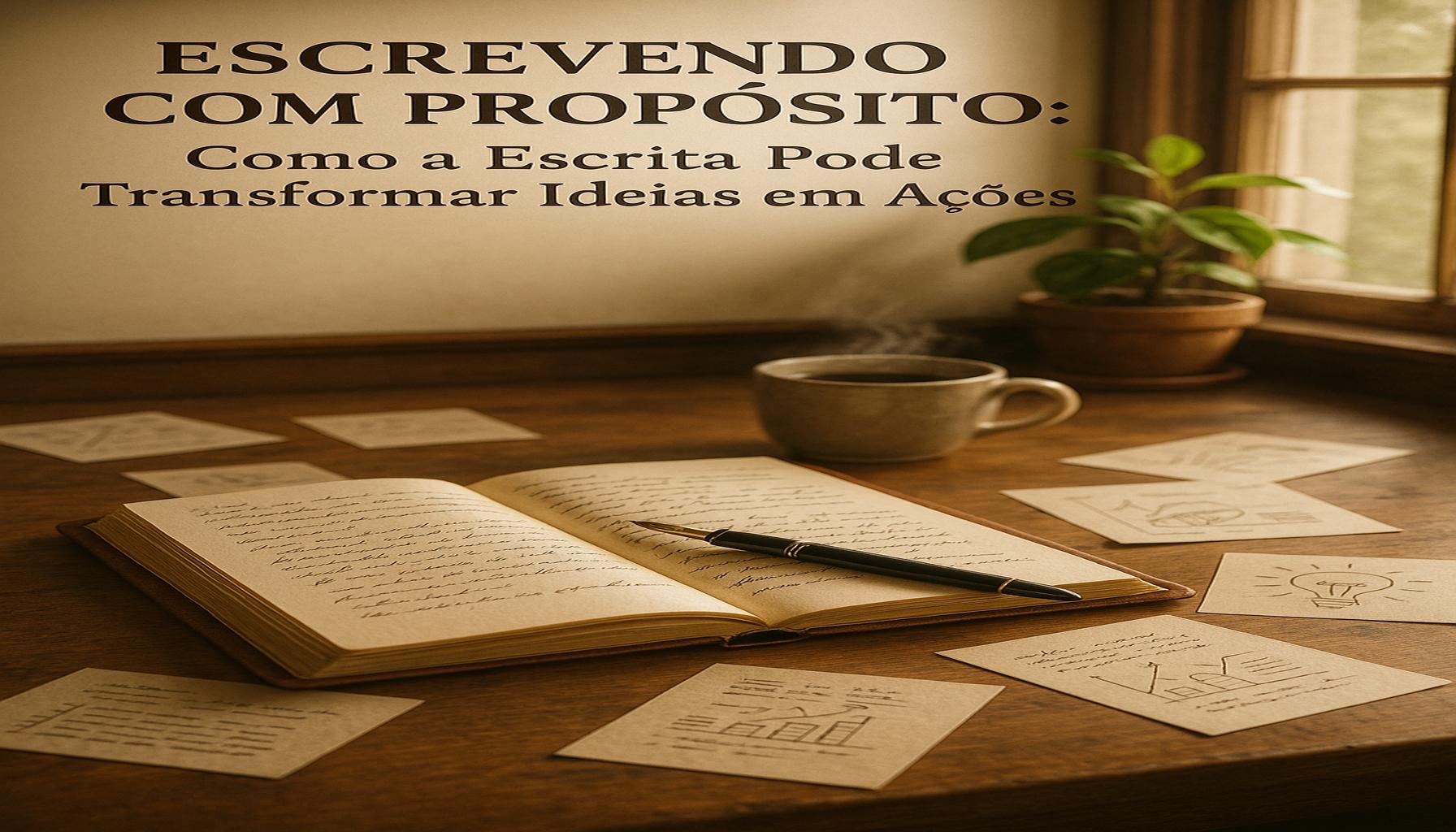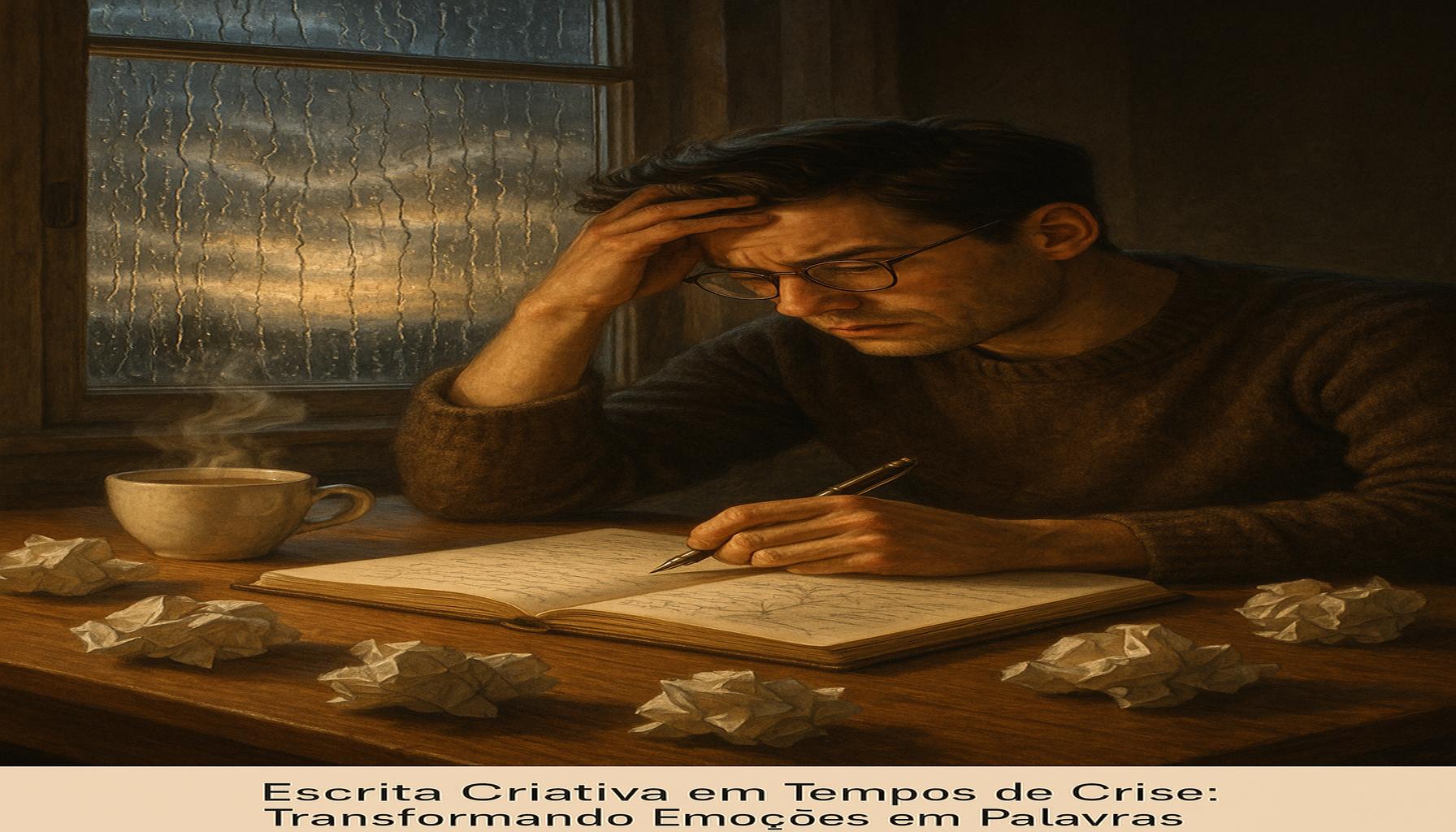Creative Nonfiction Writing: Transforming Facts into Engaging Narratives

The Power and Appeal of Creative Nonfiction
In a world overflowing with information, the ability to tell a compelling story is more crucial than ever. Creative nonfiction writing does just that, blending factual elements with the narrative flair of fiction to create enriching experiences for readers. This genre not only informs but also captivates, inviting readers on journeys through personal anecdotes, historical tales, and investigative pieces. By harnessing the power of storytelling, writers can explore complex themes and ideas in ways that resonate across diverse audiences.
Consider these essential characteristics of creative nonfiction:
- Authenticity: Real-life stories that add depth and context, allowing readers to connect with the truth behind the narrative. For instance, memoirs like “The Glass Castle” by Jeannette Walls illustrate how personal experiences can reveal broader societal issues, lending insight into family dynamics and socioeconomic struggles.
- Vivid Imagery: Descriptive language paints scenes and evokes emotions, inviting readers to visualize the narrative vividly. Take, for example, the immersive landscapes found in Annie Dillard’s “Pilgrim at Tinker Creek.” Her ability to describe nature not only informs but also ignites a passion for the environment.
- Character Development: Complex individuals resonate with readers, making the narrative feel relatable and authentic. In “Into the Wild” by Jon Krakauer, the nuanced portrayal of Christopher McCandless invites reflection on themes of adventure, disillusionment, and the search for identity.
- Narrative Structure: Engaging plots that adopt a beginning, middle, and end help guide the reader through the complex stories being told. A skillful balance of pacing and tension often found in Truman Capote’s “In Cold Blood” showcases how structured storytelling can hook readers while providing critical insights into crime and morality.
Whether you’re sharing your own experiences or exploring broader societal issues, the power of storytelling can transform mundane facts into captivating narratives. Prominent works like “The Immortal Life of Henrietta Lacks” by Rebecca Skloot illuminate the intersection of ethics and scientific advancement, while “Educated” by Tara Westover powerfully demonstrates how education can transform one’s life, challenging readers to reflect on their own paths.
As readers, we crave content that engages our minds and touches our hearts. Through creative nonfiction, writers can achieve this balance, offering insights that resonate long after the last page is turned. In a diverse landscape where voices need to be heard, exploring the strategies and techniques that elevate writing into the realm of the remarkable becomes essential. Topics ranging from personal narratives to in-depth investigative journalism all hold the potential to illuminate forgotten histories, challenge injustices, and celebrate the intricacies of human experience.
Ultimately, engaging with creative nonfiction not only enriches readers but also fosters a greater appreciation for the power of storytelling in understanding our world. It urges us to reflect, empathize, and perhaps even challenge our perspectives, making it a vital form of contemporary literature.
DIVE DEEPER: Click here to discover the art of storytelling
Unpacking the Techniques of Creative Nonfiction
To truly appreciate the craft of creative nonfiction, one must delve into the techniques that set it apart from traditional journalism or straightforward storytelling. These techniques not only engage readers but also elevate factual accounts into memorable experiences. Here are some vital strategies that writers can employ in their creative nonfiction journey:
- Research and Fact-Checking: While the art of storytelling is crucial, a solid foundation of accurate information is paramount. Writers must commit to thorough research to ensure all facts are correct. Prominent authors like Malcolm Gladwell exemplify this, as he weaves rigorous research into narratives that explore psychological phenomena, allowing readers to grasp complex concepts effortlessly.
- Voice and Tone: The writer’s unique voice is an essential aspect of creative nonfiction. It can influence how readers perceive the narrative and relate to its characters or themes. For instance, Brené Brown uses a conversational yet authoritative tone in her work, making her insights into vulnerability and leadership both relatable and impactful.
- Setting and Context: Crafting a well-defined setting is critical in placing readers within the story. The backdrop can enhance the emotional depth and inform the narrative by contextualizing the events being narrated. Consider the powerful images of New Orleans post-Hurricane Katrina depicted in “Zeitoun” by Dave Eggers, where the setting becomes almost a character in its own right.
- Emotional Resonance: Engaging narratives elicit emotions, often prompting readers to connect deeply with the material. Writers can achieve this through relatable experiences, poignant reflections, and the exploration of universal themes. A masterful example is Cheryl Strayed’s “Wild”, where her emotional journey resonates with readers facing their own struggles.
The synthesis of these techniques allows writers to craft narratives that are not only informative but also possess the engagement factor necessary in creative nonfiction. This genre thrives on the premise that facts can be transformed into rich experiences that foster understanding and empathy among readers. The intersection of fact and narrative thus becomes an arena for artistic expression, challenging conventional boundaries while inviting exploration of the human experience.
As writers navigate the myriad domains within creative nonfiction—from personal essays and memoirs to historical accounts and cultural reflections—they hold the potential to spark transformative conversations. This unique blend of analytical rigor and emotional storytelling can open new pathways for understanding complex issues facing society today, ranging from healthcare ethics to racial inequality. By embracing these techniques, authors not only share their truths but provoke thoughts that connect readers to broader social contexts.
This transformative nature of creative nonfiction serves as a potent reminder that storytelling has the power to transcend mere facts and figures, inviting readers on a journey that elicits reflection and discovery. As we continue to explore the notable works and influential figures within this genre, we can unearth the profound impact creative nonfiction has on both literature and society at large.
| Advantage | Description |
|---|---|
| Strong Engagement | Creative nonfiction relies on compelling storytelling, making facts more relatable and captivating for readers. |
| Enhanced Understanding | By weaving facts into narratives, complex topics become more accessible, allowing readers to grasp intricate ideas with ease. |
In the realm of creative nonfiction writing, the ability to transform cold, hard facts into engaging narratives stands out as a profound advantage. It is not merely about presenting information, but rather about crafting experiences that invite readers to delve deeper into the material. Writers utilize techniques commonly found in fiction – character development, scene setting, and plot – thus captivating their audience and elevating their understanding.For instance, through the art of storytelling, a writer can draw connections between seemingly unrelated events, offering insights that statistics alone cannot provide. This fusion of knowledge with creativity stimulates curiosity and promotes a greater appreciation for the subject, making it a vital tool in education, journalism, and beyond. By employing rich descriptive language and vivid imagery, writers can turn even mundane topics into enlightening explorations, encouraging readers to reconsider their preconceptions and inviting them on an intellectual journey.
DISCOVER MORE: Click here to unleash your creativity
Bridging the Gap Between Personal Experience and Universal Truths
The strength of creative nonfiction resides not only in its storytelling techniques but also in its ability to bridge the gap between personal experiences and universal truths. By delving into the subjective world of writers’ lives, these narratives illuminate broader societal issues, resonating with a diverse readership. Here are some approaches that further enhance this connection:
- Personal Narrative: Incorporating personal experiences can lend authenticity and relatability to creative nonfiction. Writers often draw from their own experiences to illuminate societal themes, as seen in James Baldwin’s work, where he intertwines his personal identity with the struggles of racial injustice in America. Baldwin’s powerful accounts not only convey his story but also reflect a larger cultural dialogue, offering insight into the African American experience.
- Character Development: In creative nonfiction, well-crafted characters can elevate the narrative and engage readers more deeply. This can include individuals who have shaped the writer’s life or those caught in significant events. The profiles created in Rebecca Skloot’s “The Immortal Life of Henrietta Lacks” demonstrate how full-bodied character development can impact how readers understand ethical issues surrounding medical research and race relations, encouraging empathy through the depiction of complex human lives.
- Strong Narrative Arc: Just like fiction, creative nonfiction benefits from a compelling narrative arc that includes an introduction, conflict, and resolution. This approach creates a dramatic tension that captivates readers. Tracy Kidder’s “Mountains Beyond Mountains” follows the journey of Dr. Paul Farmer as he tackles health disparities in Haiti, meticulously building suspense around the challenges he faces, while still firmly grounding the narrative in factual accounts.
- Use of Literary Devices: Writers can borrow techniques from poetry and fiction, such as imagery, metaphor, and foreshadowing, to create rich, textured narratives. Incorporating these devices allows for a more nuanced exploration of themes. For instance, in Mary Karr’s “The Liars’ Club,” vivid imagery and sensory details transport readers into her tumultuous childhood, providing not just facts but an immersive experience that resonates on an emotional level.
This blending of personal narratives with broader themes not only captivates readers but also fosters a sense of connection and understanding. In a world inundated with data and statistics, the human stories behind the numbers can have a profound impact, encouraging deeper engagement and reflection on critical issues. Writers are uniquely positioned to shine a light on social injustices, cultural complexities, and the universal nature of the human experience.
Furthermore, as creative nonfiction continues to evolve, it is essential to consider the role of technology and multimedia elements that can enhance storytelling. In today’s digital age, the incorporation of visuals, audio, and interactive components can further enrich narratives. Platforms like The Atavist and Vox offer innovative formats that combine text with multimedia, creating immersive experiences that may draw in more readers while providing more profound insights into the topics at hand.
Ultimately, creative nonfiction remains a vital genre that challenges writers to explore the depth of their experiences while addressing the complexities of modern life. By cultivating these connections through a multitude of narrative strategies, authors can invite readers into their worlds, fostering empathy and encouraging meaningful dialogue around essential social issues.
DIVE DEEPER: Click here to unlock your imagination
Conclusion
In conclusion, the genre of creative nonfiction stands as a testament to the power of narrative in conveying real-life stories with depth and resonance. By skillfully intertwining facts with the art of storytelling, writers are able to engage audiences on both intellectual and emotional levels. This genre not only highlights personal experiences but also sheds light on universal issues, encouraging readers to reflect and connect with the human experience.
As authors like James Baldwin, Rebecca Skloot, and Tracy Kidder have illustrated, the ability to craft a compelling narrative arc, develop rich characters, and utilize literary devices turns real-life accounts into memorable tales that inspire change and empathy. Moreover, the ongoing evolution of technology allows for innovative storytelling techniques that can captivate and immerse readers further, adapting to the dynamic landscape of contemporary media.
Whether addressing social injustices, exploring cultural complexities, or unveiling personal truths, creative nonfiction serves as a vital means for meaningful dialogue. As readers, we are invited not just to consume information, but to engage deeply with stories that challenge our perspectives. Ultimately, as we navigate a world where facts and figures often dominate discourse, the art of creative nonfiction reminds us of the human stories that give those numbers their significance, forging connections amongst diverse experiences and fostering a shared understanding of our collective reality.



